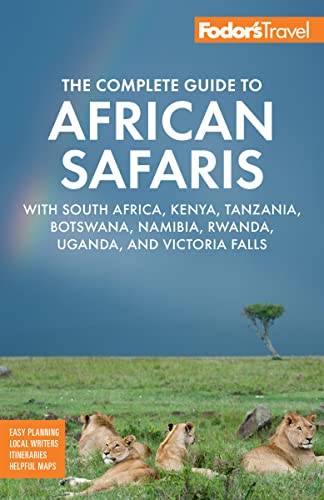This 12,000-square-km (4,500-square-mile) reserve is the second largest national park in Botswana, and it has four very different ecosystems: Serondela in the extreme northeast with fertile plains and thick forests; the Savuti Channel in the west, which is now once again spilling its contents into Savuti marsh; the Linyanti Swamps in the northwest; and the arid hinterland in between.
The whole area, however, is home to a shifting migratory population of more than 50,000 elephants. In addition to spotting Chobe's great pachyderm herds, you should see lions, leopards, hyenas, wild dogs, impalas, waterbucks, kudus, zebras, wildebeests (gnus), giraffes, and warthogs. Watch closely at the water holes when prey species come down to drink and are most vulnerable—they are so palpably nervous that you'll feel jumpy, too. Lions in this area are often specialized killers; one pride might target giraffes, another zebras, another buffalo, or even young elephants. But lions are also opportunistic, and you could see them pounce on anything from a porcupine to a lowly scrub hare. Bird life along the river is awesome and the major must-sees are the slaty egrets, rock pratincoles, pink-throated longclaws, and lesser gallinules.
The northern section of the park comprises riverine bush devastated by the hordes of elephants coming down to the perennial Chobe River to drink in winter. Fortunately, the wide sweep of the Caprivi floodplains, where hundreds of buffalo and elephants graze silhouetted against almost psychedelic sunsets, softens this harsh, featureless landscape where it faces neighboring Namibia.
Chobe can be crowded, unlike the rest of Botswana, because there are simply too many vehicles on too few roads, particularly in the dry season. One of the quieter parts of the park is around the Ngwezumba River, an area of forests and pans in the more remote middle of the park; the drawback here is that game is harder to find.
In the southwestern part of the park lies the fabled Savuti area, famous for its predators. Savuti offers a sweeping expanse of savanna brooded over by seven rocky outcrops that guard a lush marsh, courtesy of the now-flowing Savuti Channel. Savuti is dramatically different from elsewhere in Botswana; there are open spaces, limitless horizons, wide skies, and unending miles of waving tall grass punctuated by starkly beautiful dead trees—the legacy of the relentless drought. After exceptional rains and an above-average flood in 2010, the Savuti Channel started flowing again, attracting thousands of plains animals and attendant predators. Your chances of seeing wild dogs are high. Like Chobe National Park overall, Savuti is famed for its elephants, but breeding herds are only there for a two- to three-month period before the first rains. The rest of the year, Savuti is the domain of the bull elephants: old grandfathers, middle-aged males, and feisty young teenagers. The old ones gaze at you with imperturbable dignity, but it's the youngsters who'll make your adrenaline run riot when they kick up the dust and bellow belligerently as they make a mock charge in your direction.
And while you're in the Savuti area looking for leopards and the tiny acrobatic klipspringer antelopes, be sure to pay a visit to the striking rock paintings, early humans' attempts to represent the wildlife all around. In summertime thousands of migrating zebras and wildebeests provide the equivalent of fast food for the lion prides, hungry hyenas, and cheetahs that follow the herds. The Cape buffalo herds also arrive in summer along with thousands of returning bird migrants. The raptors are spectacular. You'll see falcons, eagles, kestrels, goshawks, ospreys, and sparrow hawks. In the northwest of the park are the Linyanti Swamps, also famous for their game concentrations, and in particular wild dogs. Early morning and late afternoon are the best game-spotting times.






